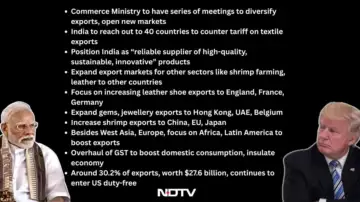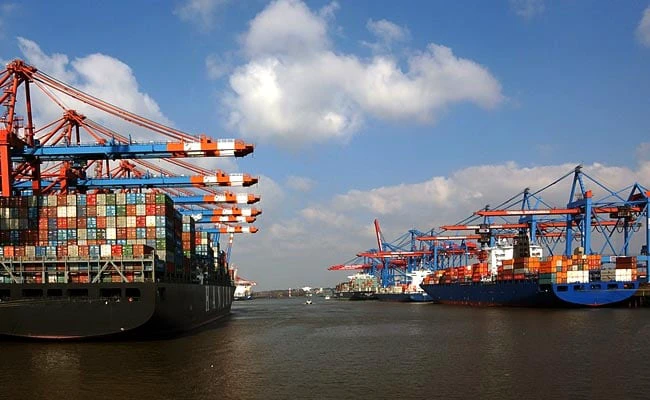Faced with the United States’ 50 per cent tariff on exports – which came into effect at 9.31 am Wednesday – India has reached out to dozens of nations to up trade in key sectors like textiles and chemicals.
The goal – offset a potential $48 billion loss in export of goods and services to the US.
Sources said the Commerce Ministry is expected to meet industry leaders, trade reps, and counterparts from other countries over the next 72 hours – to diversify exports and open new markets.
As part of this overall plan, India will reach out to 40 countries, including the United Kingdom, South Korea, and Japan, and other European countries and Australia, to counter hefty tariffs on various labour-intensive sectors, including textile and apparels, which exported $37 billion in goods in FY25.
Sources said the plan, in this case, is to position India as a ‘reliable supplier of high-quality, sustainable, and innovative’ products. India already exports to 200+ nations, but these 40 ‘hold the real key’ since they import a combined $590 billion in textile and apparels, and will give India a chance to signficantly increase a global market share that is currently at less than six per cent.
Plans to expand markets for other sectors, such as shrimp farming and leather, are also being made.
Puran Dawar, a leather footwear exporter from Agra, told the Associated Press the industry will take a big near-term hit unless other overseas markets – the big ones for India are England, France, and Germany – buy more leather shoes.
India’s gems and jewellery exports – which employ lakhs in the diamond trade alone – are also expected to take a hit. High tariffs on US-bound Indian exports – from less than three per cent to 52.1 per cent will favour competing hubs like Turkiye and Thailand, unless markets like Hong Kong, United Arab Emirates, and Belgium pick up the slack.
 Shrimp farmers have also expressed concern. India exported shrimps worth $2.4 billion to the US in FY2025, accounting for 32.4 per cent of total exports.
Shrimp farmers have also expressed concern. India exported shrimps worth $2.4 billion to the US in FY2025, accounting for 32.4 per cent of total exports.
With tariffs expected to hit a monstrous 60 per cent in this sector, farms in Andhra Pradesh are under threat, and need to expand to China, the European Union (particularly Spain), and Japan.
Apart from West Asia and Europe, the government is also looking to Africa and Latin America to boost exports. India-Africa trade, for example, is now worth over $100 billion and the government is looking at the African Continental Free Trade Area Agreement – signed in 2021 – to help boost that number.
Trade with LatAm countries crossed $43 billion in 2023 and is expected to touch the $100 billion-mark by FY28, sources said.
The government has also re-emphasised the need to boost local consumption and insulate the economy against foreign shocks. These measures include an overhaul of the Goods and Services Tax, or GST, framework that should lower costs for big ticket goods and ‘daily use’ items before Diwali.
The good news – around 30.2 per cent of exports, worth $27.6 billion – will continue to enter the US duty-free. These include pharmaceutical products and active pharmaceutical ingredients, which make up 56 per cent of goods in the exempt category.
Donald Trump’s tariffs – which include a 25 per cent ‘penalty’ for buying Russian oil that India criticised as “unjust, unfair, and unreasonable” – came into effect Wednesday morning. In FY25 India exported $86.5 billion in goods and services to the US.
